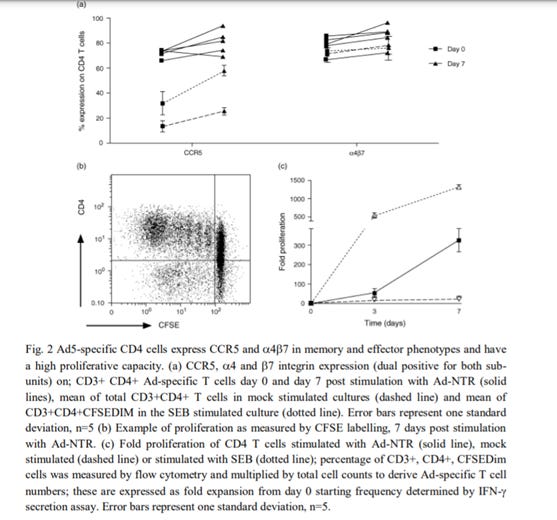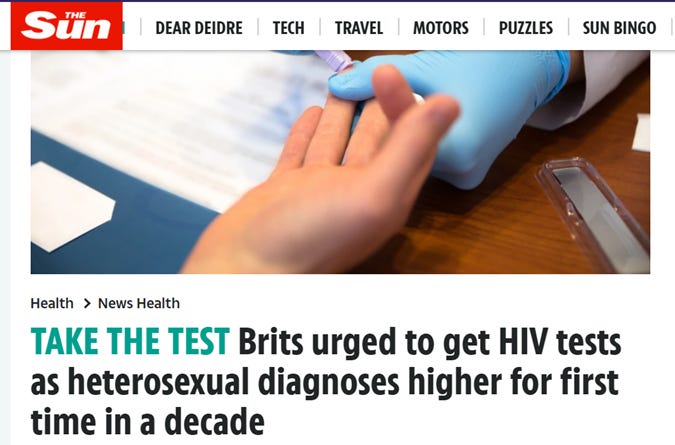VACCINE INDUCED HIV SUSCEPTIBILITY?
Early research demonstrated that there were significant problems with adenoviral vectors. Chief amongst them was the increase in susceptibility to HIV infection.
The initial research using adenoviral 5 vector (Ad5) in a novel HIV vaccine in the STEP study (2008) raised alarms as the intervention arm had a significant increase in HIV infection compared to controls. As adenoviral vector Covid-19 vaccines were being trialed with the Ad5 and other adenoviral vectors, researchers expressed their concerns.
We are writing to express concern about the use of a recombinant adenovirus type-5 (Ad5) vector for a COVID-19 phase 1 vaccine study,1 and subsequent advanced trials. Over a decade ago, we completed the Step and Phambili phase 2b studies that evaluated an Ad5 vectored HIV-1 vaccine administered in three immunisations for efficacy against HIV-1 acquisition.2,3 Both international studies found an increased risk of HIV-1 acquisition among vaccinated men.2,4
Source https://www.ncbi.nlm.nih.gov/pmc/articles/PMC7571904/
Chakupurakal et. al in Adenovirus vector-specific T cells demonstrate a unique memory phenotype with high proliferative potential and coexpression of CCR5 and integrin alpha4beta7 demonstrated the upregulation of key CD4 receptors (CCR5 & alpha4beta7) that HIV uses to infect cells, in samples from healthy donors following short-term stimulation with Ad5.
SOURCE http://pure-oai.bham.ac.uk/ws/files/2921691/Chakupurakal2010AIDS24.pdf
Remarkably, given the significant threat of Ad5 vector vaccines, the NIH continued to fund their development.
The development of an effective malaria vaccine is a high global health priority. Vaccine vectors based on adenovirus type 5 are capable of generating robust and protective T cell and antibody responses in animal models and are currently being evaluated in clinical trials for HIV and malaria. They appear to be more effective in terms of inducing antigen-specific immune responses as compared with non-Ad5 serotype vectors…. Our data establish that these hexon-modified vectors are highly immunogenic even in the presence of pre-existing anti-adenovirus antibodies. These hexon-modified adenovectors may have advantages in sub-Saharan Africa where there is a high prevalence of Ad5 neutralizing antibody in the population.
SOURCE https://journals.plos.org/plosone/article/file?id=10.1371/journal.pone.0033920&type=printable
Funding.
SOURCE https://journals.plos.org/plosone/article/file?id=10.1371/journal.pone.0033920&type=printable
The question of whether it was safe to proceed with adenoviral vectors or not should have been an easy one to answer – don’t take the risk.
Unfortunately, as we see often in vaccine research, common sense does not prevail: they decided to just try other adenoviral vectors. Which now brings us to 2022 and a significant chunk of the World’s population having been vaccinated with adenoviral vector vaccines including Astrazeneca’s and J&J’s iterations.
Of course, claims will be made that they are safe & effective but call me cautious when I don’t just believe the first thing I’m told by drug companies.
Can we just assume that there won’t be any cross-reactivity with adenoviral vectors resulting in the same problem found with Ad5, down the line?
Heemskert et. Al in Extensive Cross-Reactivity of CD4+ Adenovirus-Specific T Cells: Implications for Immunotherapy and Gene Therapy doesn’t make me feel confident that we can.
Responding T cells were CD4+ and produced IFN-γ upon restimulation with infectious Ad5 and Ads of different subgroups. T-cell clones showed distinct cross-reactivity patterns recognizing Ad serotypes from either one subgroup (C), two subgroups (B and C), or three subgroups (A, B, and C). This cross-reactivity of Ad-specific T cells has relevance both for Ad-based gene therapy protocols, as well as for the feasibility of T-cell-mediated adoptive immunotherapy in recipients of an allogeneic stem cell transplantation.
SOURCE https://www.ncbi.nlm.nih.gov/sites/ppmc/articles/PMC155022/
And Balandya et. Al in Adenovirus serotype 26 and 35 vectors induce simian immunodeficiency virus-specific T lymphocyte responses in foreskin in rhesus monkey.
Using the rhesus monkey model, we show that intramuscular immunization with adenovirus serotype 26 and 35 vectors expressing SIV antigens elicited durable SIV Gag-specific CD4(+) and CD8(+) T cell responses… the majority of foreskin T cells exhibited transitional memory or effector memory phenotype and expressed higher levels of the activation markers CD69, HLA-DR, and CCR5.
SOURCE https://pubmed.ncbi.nlm.nih.gov/24429370/
CD69, a marker for HIV; and CCR5 a co-receptor for HIV.
Interestingly, we are facing a new challenge with HIV.
It comes after a new HIV 'super strain' has been detected with 109 new cases.
The new 'super-strain' - called "VB" - was first found in the Netherlands as part of a study that collects samples.
Data from the UK Health Security Agency (UKHSA) shows that in England in 2020, half of all new HIV diagnoses were in heterosexuals - compared to 45 per cent in gay and bisexual men
SOURCE https://www.thesun.co.uk/health/17571457/brits-urged-hiv-tests-heterosexual-diagnoses-higher/
Research demonstrates a potential risk of increased susceptibility to HIV infection after vaccination with an adenoviral vector. Remarkably co-incidental, after vaccinating the globe with that technology, we are now faced with a ‘new’ strain of HIV that infects with higher viral loads and also we have for the first time higher infection rates in heterosexuals.
Triple co-incidentally, the discoverer of HIV Luc Montagnier, who arguably would have called this out, dies at the same time. The ’new’ strain of HIV actually is thought to be about 40 years old but suddenly we’re all supposed to believe it is now very deadly. I don’t think you can blame people for thinking something suspicious may be going on here.
We now contend with another risk
What we have are Covid vaccines with obvious risks eg Vaccine‐induced immune thrombotic thrombocytopenia and of course myocarditis; we may now have to contend with another – increased susceptibility to HIV infection. And possibly a cover story of a ‘new’ strain infecting heterosexuals overcoming the immune system at a faster rate, maybe just to divert attention away from the vaccines?






